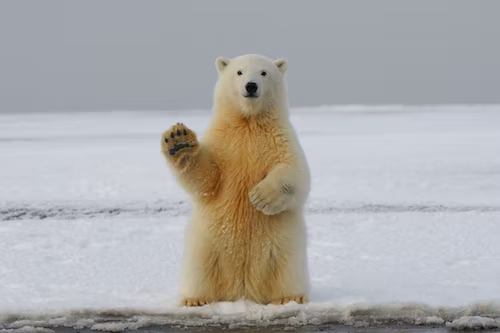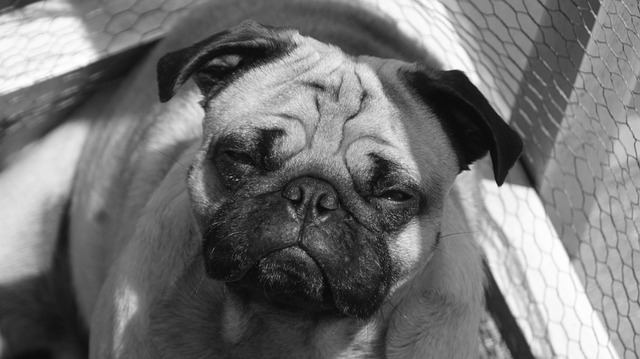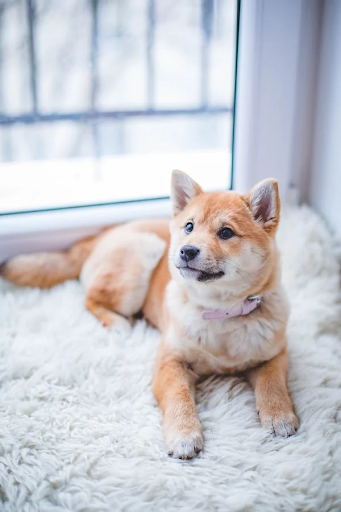How certain breeds of dogs came to be
Dogs have been our companions for centuries. That's a lot of time to come up with a lot of stories about where your dog came from. Let's set the record straight by taking a look at breeds of dogs and how they came to be.
1. Labrador Retriever (Labrador)
It was developed by breeders who wanted to create a breed that could assist hunters in the field. Over time, Labs have become popular as family pets and companion dogs.
The Lab's ancestors are believed to be a cross between Newfoundland dogs and other working breeds such as setters and spaniels. It's thought that the St. John's Water Dog, now extinct, may have also played a role in the Lab's development.
The first Labrador Retriever was bred by Captain Samuel Hinds, who owned an estate on the east coast of Newfoundland near the town of Labrador City. He purchased some black-and-tan St. John's Water Dogs (also known as Newfoundlands) from local fishermen and used them to develop his own line of hunting dogs—which he called “Newfoundland” or “Labrador” Hounds.
The dog was officially recognized by the Kennel Club in 1903 and was registered under its current name: Labrador Retriever—or simply Labrador for short!
2. German Shepherd Dog (GSD)
It was originally called the “Alsatian Wolf Dog,” but the name was changed because it did not fully describe the breed. The GSD is a medium-sized dog with a deep chest, strong limbs and a long tail that they use as a rudder when they are running. Their ears are pricked and their eyes are dark brown with an alert expression. Their coats are rough, but some dogs have smooth coats as well.
The GSD has been used for many years as guard dogs, police dogs and service animals for people with disabilities such as blindness or deafness. They are also used for search & rescue missions, drug sniffing and tracking criminals. They are very intelligent and easy to train because they love pleasing their owners so much!
3. Poodle (Poodle)
The Poodle's origin comes from Germany and France. They have been around for a very long time, but their exact origins are unknown. Over time, they have changed quite a bit from what they originally were like. Still, there are many similarities between today's Poodles and those that were used to hunt waterfowl hundreds of years ago.
The first written description of what we now know as Poodles was written by German writer Johann Wolfgang von Goethe in 1793. He described them as being “a dog that is neither large nor small”. That description holds true today since Poodles come in three sizes: standard, miniature and toy!
4. Beagle (Beagle)
Beagle is a breed of dogs that came to be in the United Kingdom. This breed is also known as the English beagle and has been around for more than 400 years. The Beagle was first registered with the American Kennel Club in 1885, but the AKC did not recognize it until 1935. Beagles are known for their keen sense of smell and great endurance.
They are small dogs that can weigh between 13 and 18 pounds when fully grown. They have short legs and long ears that help them hear things that humans cannot hear. Their coat is usually brown or tan with white markings on their chest, feet, muzzle and tail tip.
Beagles are very loyal dogs who enjoy following their owners around wherever they go. These dogs are easy to train because they love treats! If you want to teach your Beagle how to sit or lay down all you need is some food or another reward like a toy or praise from you!
5. Golden Retriever (Golden Retriever)
The Golden Retriever has a long history of being a breed of dog that was bred for hunting purposes. This breed's ancestors were English Setters and Tweed Water Spaniels. However, it wasn't until the late 1800s that this breed began to be bred in Scotland.
The origins of the Golden Retriever are difficult to pinpoint because there are many different theories about where the breed originated from. One theory suggests that the Golden Retriever came from Russia and were used in hunting for upland game birds such as grouse and pheasant. Another theory suggests that this breed originated in Scotland when English Setters were crossed with Tweed Water Spaniels in order to create a dog that could retrieve waterfowl without needing much training.
6. Dachshund (Dachshund)
It has two varieties, smooth-haired and long-haired. It is a small size dog that has a very long body and short legs. Dachshunds are considered as one of the oldest dog breeds in Europe. They were often used as hunting dogs because of their keen sense of smell and ability to burrow underground to catch their prey.
Dachshunds are friendly and playful dogs that love to play with their owners, but they can also be stubborn at times especially when it comes to training them properly. They are easy to train but they need consistency in order for them to learn fast and become obedient dogs. They have an innate desire to dig holes so if you leave your yard unkempt then this breed may dig holes everywhere in your yard or garden making it difficult for you to maintain your yard cleanly.
7. Boxer (Boxer)
It was named after its resemblance to a boxer, which is an old-fashioned type of fighting dog used in England in the early 19th century. It's believed that these dogs were bred from Bullenbeisser and Manchester Terrier with some other breeds added later on.
The Boxer was originally used as a guard dog and today they have become very well known for being great family pets. They are very loyal and protective animals who are very playful and energetic when it comes to playing with children or other dogs but they can also be very calm when they need to.
The Boxer has been around since at least the late 19th century but there are records of them being used as far back as 1882 when they were first bred in Germany by crossing Bullenbeisser with Manchester Terriers. They have been bred in many colors including brindle, red fawn, black fawn, silver fawn, brown fawn and blue fawn.
8. Chihuahua (Chihuahua)
Chihuahuas are a kind of dog, whose origin is very old. It was said that they were brought by the Spanish explorers, who brought them from Mexico. According to the records, they were the smallest breed of dogs and they were used as toys for children in the palace.
The Chihuahua has been mentioned in many ancient writings. The ancient Aztecs had some legends about this breed of dogs as well. There are many references about these dogs in their writings, but there are no records about when and how these dogs arrived in North America.
There have been many theories about how these dogs came to be, but there is no concrete evidence available yet. Many people believe that these dogs came from China or Japan, where they still exist today as different breeds of small dogs with long tails and pointed ears.
However, there are some evidence which points towards Mexico as their homeland and say that they might have been brought by the Spanish explorers who came from Spain around 300 years ago.
9. Siberian Husky (Siberian Husky)
The Siberian Husky is a breed of domestic dog, best known for their ability to pull sleds over long distances. This breed has a medium length double coat that protects them in cold weather. They are often mistaken for Alaskan Huskies, however, there are differences in the two breeds including weight and coloration.
Siberian Huskies descended from the domesticated dogs of the Chukchi people who lived on the Siberian tundra thousands of years ago. They were bred by these people to pull sleds for transportation and hunting purposes.
Siberian Huskies can be any color except solid black or liver (a brownish-red color). Most dogs have blue eyes and a thick double coat that protects them from cold temperatures. This breed is also known for being sociable with humans and other animals, making them good pets for families with children
The conclusion to this blog post is that the history of dog breeds is both inexact and extremely interesting. The reality, of course, is that despite the enormous amount of documentation available on dog breeds, there's no simple answer to precisely how certain dogs came to be. There are simply too many breeders with too many different methods, and even official standards can have a tendency to vary as times change and attitudes shift.
For more helpful and informative insights, visit here.





